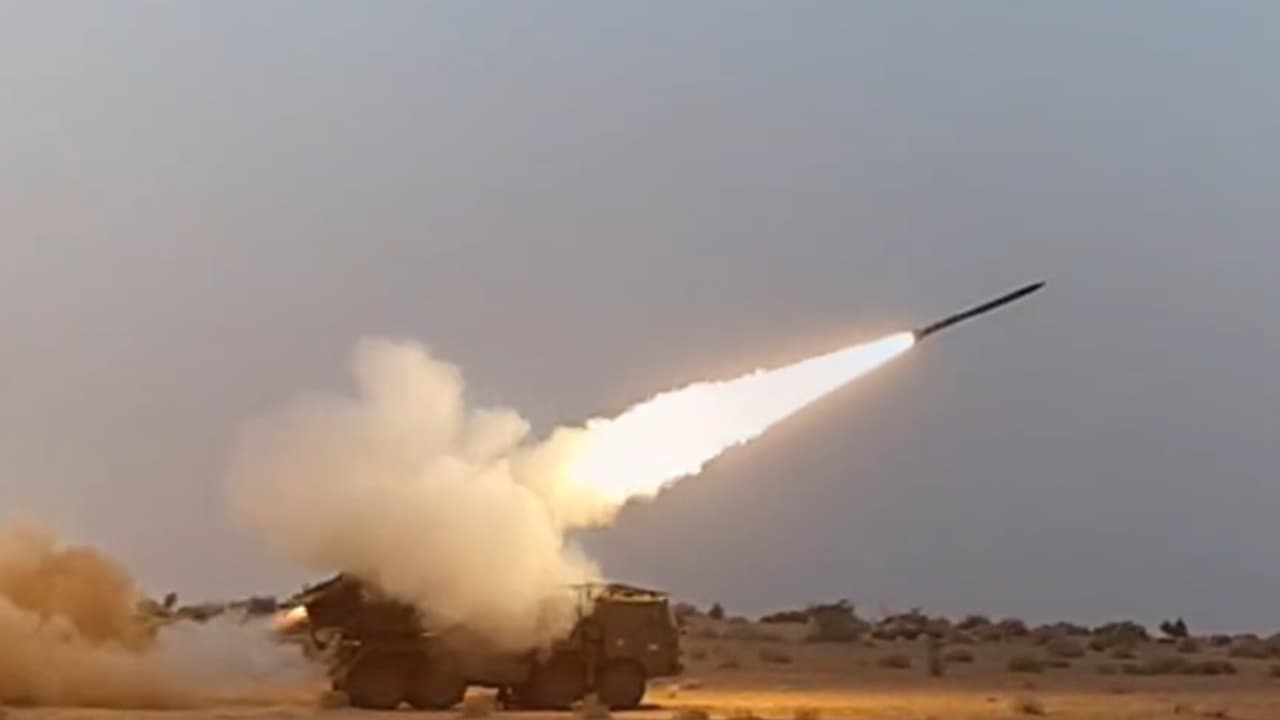India’s indigenous Pinaka rocket system is evolving fast, with the upcoming Mk-II boosting strike range to 120 km and Mk-IV reaching 300 km by 2030, combining rapid-fire power, AI-guidance and modular versatility for future warfare.
India’s artillery capabilities are set for a major transformation with the upcoming induction of advanced Pinaka rocket systems. The Pinaka Mk-II, scheduled to join the Indian Army within three years, will significantly extend India’s strike range to 120 km nearly double that of current versions. Looking further ahead, the Pinaka Mk-IV promises even greater capabilities with its impressive 300 km range expected to enter service by 2030.
Building on a Strong Foundation
The Pinaka system, named after Lord Shiva’s legendary bow, has already proven its worth with existing variants. The current Pinaka Mk-I covers 38-40 km, while the Extended Range Mk-I reaches 60-75 km. These systems are actively deployed along India’s borders, filling a crucial gap between conventional artillery (30 km range) and tactical ballistic missiles (150-300 km range).
Pinaka Mk-II: Precision Meets Power
The upcoming Mk-II represents a significant technological leap. Its 120 km range is achieved through improved rocket fuel, lighter construction, and enhanced guidance systems. The integration of GPS and INS navigation will deliver unprecedented accuracy—hitting targets within 10 meters compared to the less precise unguided rockets of earlier versions.
The system retains Pinaka’s signature rapid-fire capability, launching 12 rockets in under 44 seconds from a single launcher. A complete regiment with 18 launchers can saturate an area equivalent to 112 football fields, creating devastating firepower concentration.
Pinaka Mk-IV: Quasi-Ballistic Missile Technology
The Mk-IV pushes boundaries further, entering quasi-ballistic missile territory with its 300 km range. This positions it alongside world-class systems like Russia’s BM-30 Smerch and China’s PHL-03. Its enhanced capabilities include a wider body (potentially expanding from 214mm to 300mm) to accommodate more powerful payloads.
Advanced guidance systems will combine GPS/INS with active radar seekers for terminal-phase accuracy. The rocket will achieve remarkable precision, landing within 5 meters of targets—even moving ones like mobile missile launchers. The expected throttleable propulsion system will enable mid-flight trajectory corrections and enhanced maneuverability to evade enemy air defenses.
Versatility Through Modular Design
The Mk-IV’s modular platform approach allows mission-specific configurations. It can deploy cluster munitions for area coverage, anti-radiation warheads targeting enemy radars, or loitering munitions that act as airborne sentinels seeking targets. This flexibility ensures effectiveness across diverse battlefield scenarios.
Integration and Network-Centric Warfare
Connection to India’s Integrated Artillery Command and Control System (IACCS) will enable real-time coordination with other modern systems like the K9 Vajra self-propelled guns and Dhanush howitzers. This network-centric approach transforms individual weapon systems into components of a unified, intelligent warfare ecosystem.
Recent Ammunition Enhancements
The system’s versatility is further enhanced by new ammunition types. The Area Denial Munition (ADM) Type-1 DPICM spreads multiple bomblets over wide areas, effectively blocking enemy movement. The High Explosive Pre-Fragmented (HEPF) Mk-1 Enhanced delivers concentrated destructive power through metal fragments, ideal for eliminating specific targets.
Timeline and Strategic Impact
Development milestones are clearly defined. Mk-IV prototype testing begins in 2027-2028, with production starting in 2029 and full Army induction by 2030. The goal of establishing 22 Pinaka regiments by 2030 underscores the system’s central role in India’s artillery modernization.
The Pinaka program exemplifies India’s Aatmanirbhar Bharat mission, showcasing indigenous defense capabilities that match global standards. From the proven Mk-I systems currently guarding borders to the futuristic Mk-IV with its quasi-ballistic missile capabilities, Pinaka represents India’s evolution from weapons importer to defense technology innovator.
This comprehensive rocket artillery family will provide the Indian Army with layered strike capabilities, combining rapid-fire saturation attacks with precision strikes deep into enemy territory—a formidable deterrent that strengthens India’s defensive posture while demonstrating technological self-reliance.
—–E.O.M
(Girish Linganna is an award-winning science communicator and a Defence, Aerospace & Geopolitical Analyst. He is the Managing Director of ADD Engineering Components India Pvt. Ltd., a subsidiary of ADD Engineering GmbH, Germany. Contact: [email protected] )
Disclaimer: The opinions expressed are solely those of the author and do not reflect the views or stance of the organization. The organization assumes no responsibility for the content shared.
